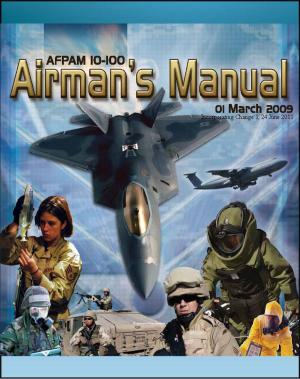Air Force Targeting Roadmap: Reinvigorating Targeting, Reachback and Distributed Operations, Systems, Tools, Architectures, Training, Force Management, Precision Munition Bombing Air Campaign
Nonfiction, History, Military, Nuclear Warfare, Aviation| Author: | Progressive Management | ISBN: | 9781311829375 |
| Publisher: | Progressive Management | Publication: | March 14, 2016 |
| Imprint: | Smashwords Edition | Language: | English |
| Author: | Progressive Management |
| ISBN: | 9781311829375 |
| Publisher: | Progressive Management |
| Publication: | March 14, 2016 |
| Imprint: | Smashwords Edition |
| Language: | English |
Professionally converted for accurate flowing-text e-book format reproduction, this unique study address issues with Air Force targeting.
Targeting is a core competency of the USAF. However, the capability and capacity to adequately conduct deliberate planning and support air operations has atrophied. At the 2012 CORONA South conference, the senior leadership of the Air Force acknowledged that there is insufficient targeting capacity. The Secretary of the Air Force (SecAF) and Chief of Staff of the Air Force (CSAF) directed the development of this roadmap as part of a larger plan to reinvigorate Air Force targeting. The Air Force Targeting Roadmap (AFTRM) was developed to address long-standing issues within Air Force targeting related to a decreasing capability to provide effective and efficient targeting support. Combining the findings from numerous studies, the strategy and risks outlined in the Global Integrated Intelligence, Surveillance, and Reconnaissance Core Function Master Plan (GIISR CFMP), targeting related equities and concerns in the Command and Control, Global Precision Attack, Agile Combat System, Space Superiority, and Cyberspace Superiority CFMPs, and recent real-world events, stakeholders across the Air Force identified the most critical deficiencies to effective targeting support for Air Force Component warfighting operations. These deficiencies were grouped into five major focus areas: targeting requirements and production capacity; reachback and distributed operations; systems, tools and architectures; training; and force management. Those deficiencies, in turn, have associated short-, mid-, and long-term actions that must be taken to reinvigorate Air Force targeting and put our Service back on the path to effectively and efficiently employ airpower to support our nation's security. Meeting the following objectives will address the identified deficiencies:
Establish an efficient Air Force targeting requirements process and increase production capacity needed to support air component targeting requirements; Enable efficient and reliable reachback and distributed operations; Build a standardized, interoperable set of systems, tools and architecture; Reinvigorate Air Force targeting through education and training; Improve force management processes.
The Air Force Targeting Roadmap provides fundamental guidance on how to better organize, train, equip, conduct, and manage our targeting and targeting-related personnel and resources to ensure efficient and effective targeting operations during peacetime, contingency, and war.
Executive Summary * Chapter 1: Introduction * 1.0. Purpose of the Air Force Targeting Roadmap * 1.1. Background * 1.2. The Air Force Targeting Enterprise * 1.3. Objectives of the Air Force Targeting Roadmap * 1.4. Roadmap Organization * 1.5. Roadmap Development Process * Chapter 2: Targeting Requirements and Production Capacity * 2.0. Introduction * 2.1. Problem Statement * 2.2. Desired End State * 2.3. Root Causes * 2.4. Actions * Chapter 3: Reachback and Distributed Operations * 3.0 Introduction * 3.1. Problem Statement * 3.2. Desired End State * 3.3. Root Causes * 3.4. Actions * Chapter 4: Systems, Tools, and Architectures * 4.0. Introduction * 4.1. Problem Statement * 4.2. Desired End State * 4.3. Root Causes * 4.4. Actions * Chapter 5: Education and Training * 5.0. Introduction * 5.1. Problem Statement * 5.2. Desired End State * 5.3. Root Causes * 5.4. Actions * Chapter 6: Force Management * 6.0. Introduction * 6.1. Problem Statement * 6.2. Desired End State * 6.3. Root Causes * 6.4. Actions * Summary and Way Ahead * Appendix 1 * Terms of Reference * Appendix 2 * "Top 5" Targeting Issues * Appendix 3 * Roadmap Development Methodology * Appendix 4 * Glossary * Appendix 5 * Reference Documents
Professionally converted for accurate flowing-text e-book format reproduction, this unique study address issues with Air Force targeting.
Targeting is a core competency of the USAF. However, the capability and capacity to adequately conduct deliberate planning and support air operations has atrophied. At the 2012 CORONA South conference, the senior leadership of the Air Force acknowledged that there is insufficient targeting capacity. The Secretary of the Air Force (SecAF) and Chief of Staff of the Air Force (CSAF) directed the development of this roadmap as part of a larger plan to reinvigorate Air Force targeting. The Air Force Targeting Roadmap (AFTRM) was developed to address long-standing issues within Air Force targeting related to a decreasing capability to provide effective and efficient targeting support. Combining the findings from numerous studies, the strategy and risks outlined in the Global Integrated Intelligence, Surveillance, and Reconnaissance Core Function Master Plan (GIISR CFMP), targeting related equities and concerns in the Command and Control, Global Precision Attack, Agile Combat System, Space Superiority, and Cyberspace Superiority CFMPs, and recent real-world events, stakeholders across the Air Force identified the most critical deficiencies to effective targeting support for Air Force Component warfighting operations. These deficiencies were grouped into five major focus areas: targeting requirements and production capacity; reachback and distributed operations; systems, tools and architectures; training; and force management. Those deficiencies, in turn, have associated short-, mid-, and long-term actions that must be taken to reinvigorate Air Force targeting and put our Service back on the path to effectively and efficiently employ airpower to support our nation's security. Meeting the following objectives will address the identified deficiencies:
Establish an efficient Air Force targeting requirements process and increase production capacity needed to support air component targeting requirements; Enable efficient and reliable reachback and distributed operations; Build a standardized, interoperable set of systems, tools and architecture; Reinvigorate Air Force targeting through education and training; Improve force management processes.
The Air Force Targeting Roadmap provides fundamental guidance on how to better organize, train, equip, conduct, and manage our targeting and targeting-related personnel and resources to ensure efficient and effective targeting operations during peacetime, contingency, and war.
Executive Summary * Chapter 1: Introduction * 1.0. Purpose of the Air Force Targeting Roadmap * 1.1. Background * 1.2. The Air Force Targeting Enterprise * 1.3. Objectives of the Air Force Targeting Roadmap * 1.4. Roadmap Organization * 1.5. Roadmap Development Process * Chapter 2: Targeting Requirements and Production Capacity * 2.0. Introduction * 2.1. Problem Statement * 2.2. Desired End State * 2.3. Root Causes * 2.4. Actions * Chapter 3: Reachback and Distributed Operations * 3.0 Introduction * 3.1. Problem Statement * 3.2. Desired End State * 3.3. Root Causes * 3.4. Actions * Chapter 4: Systems, Tools, and Architectures * 4.0. Introduction * 4.1. Problem Statement * 4.2. Desired End State * 4.3. Root Causes * 4.4. Actions * Chapter 5: Education and Training * 5.0. Introduction * 5.1. Problem Statement * 5.2. Desired End State * 5.3. Root Causes * 5.4. Actions * Chapter 6: Force Management * 6.0. Introduction * 6.1. Problem Statement * 6.2. Desired End State * 6.3. Root Causes * 6.4. Actions * Summary and Way Ahead * Appendix 1 * Terms of Reference * Appendix 2 * "Top 5" Targeting Issues * Appendix 3 * Roadmap Development Methodology * Appendix 4 * Glossary * Appendix 5 * Reference Documents















